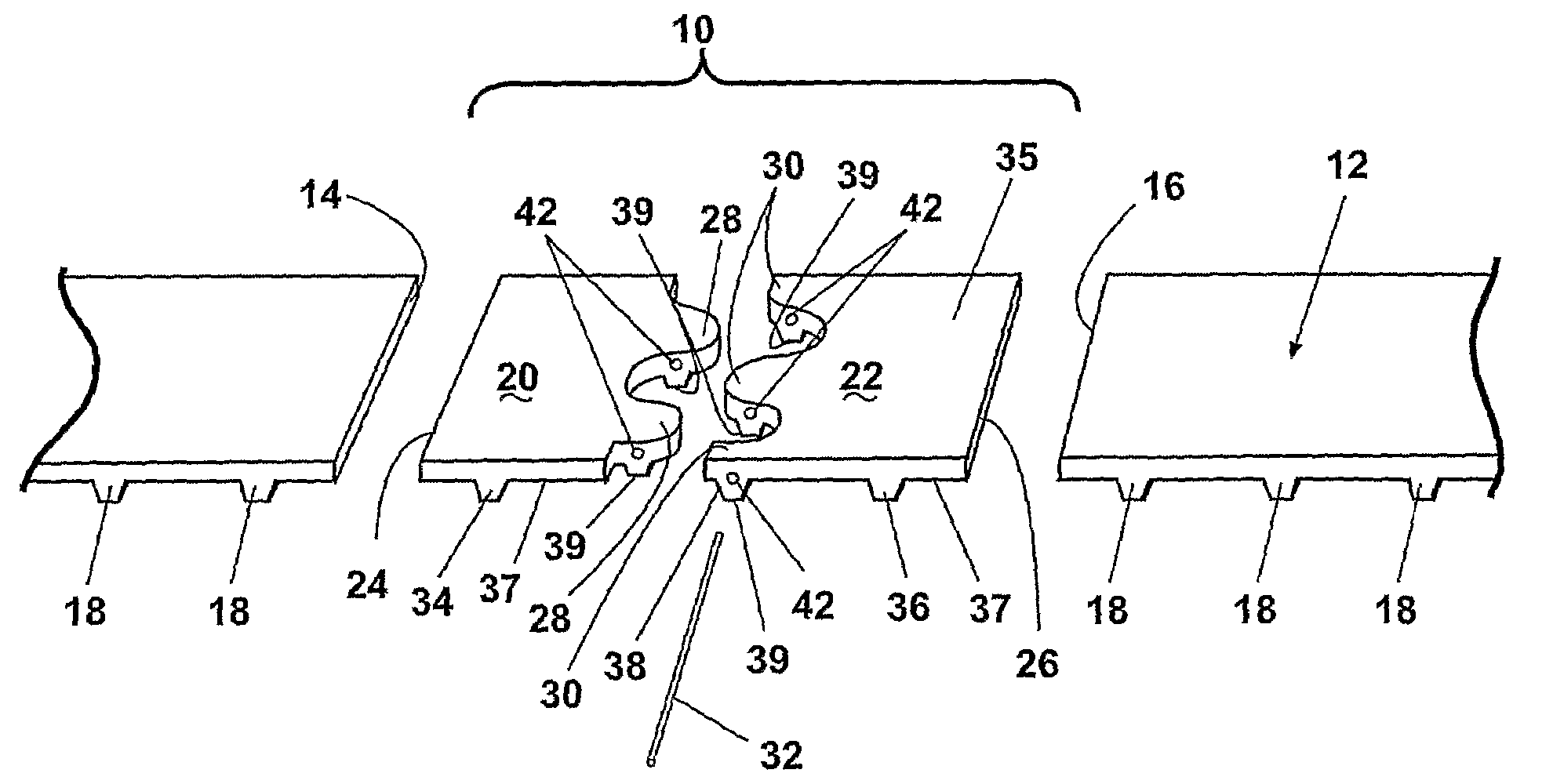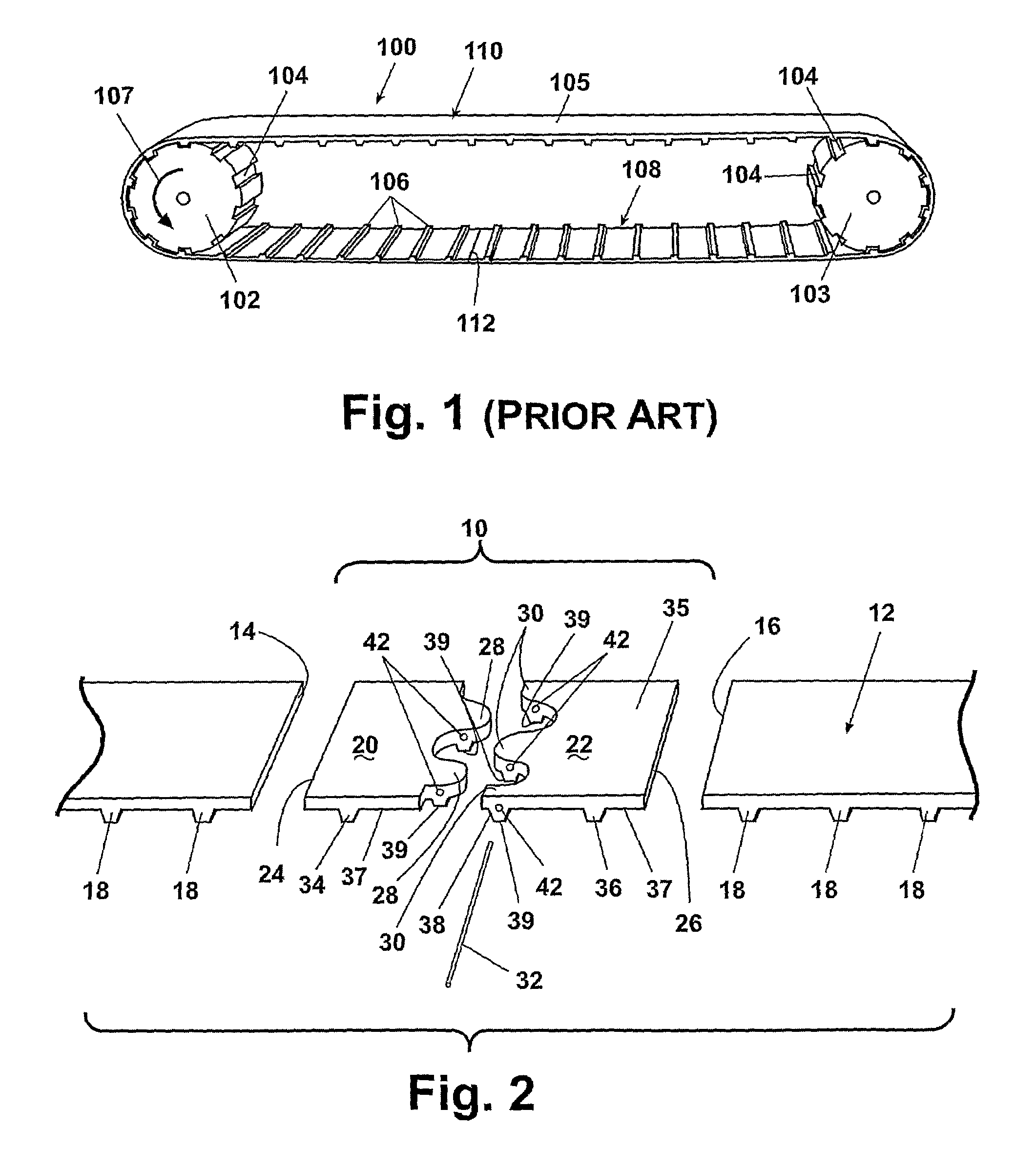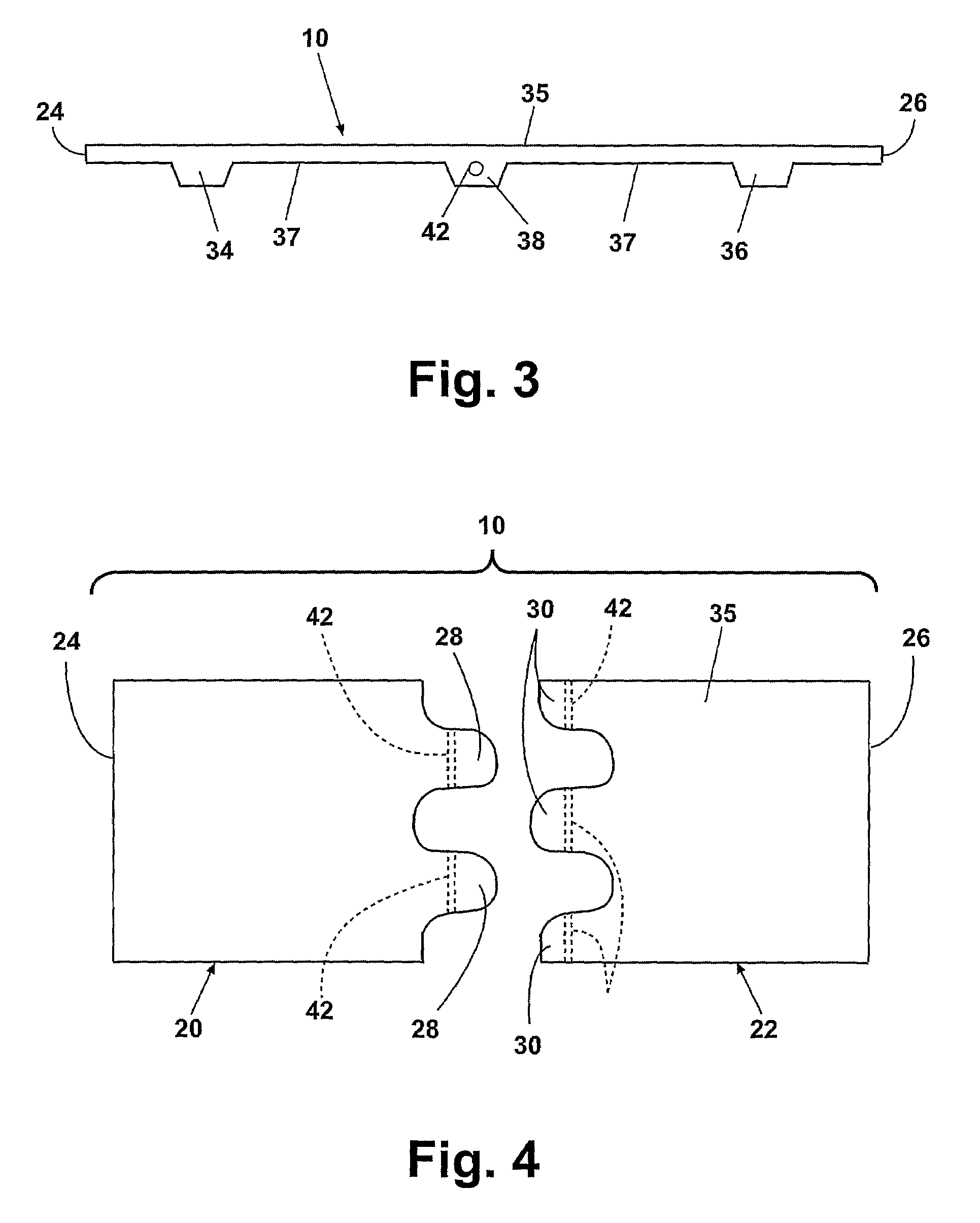Thermoplastic belt connector
a technology of thermoplastic belts and connectors, which is applied in the direction of transportation and packaging, mechanical equipment, other domestic objects, etc., can solve the problems of food particles becoming lodged in the joints affecting the service life of the interconnection links, and /b>inconvenient to clean the belts
- Summary
- Abstract
- Description
- Claims
- Application Information
AI Technical Summary
Benefits of technology
Problems solved by technology
Method used
Image
Examples
second embodiment
[0027]Turning now to FIG. 6, a belt connector 50 according to the invention provides a solution to minimize the effect of the discontinuity between the knuckles. This embodiment is in most salient respects identical to the previous embodiment, except for the addition of a tooth, a second pin, and the size of the knuckles. Consequently, like complements will bear like numerals with respect to the earlier embodiment.
[0028]The belt connector 50 is injection molded with four teeth, the two outside teeth 34, 36, and two inside teeth 52, 54, all spaced from each other the same pitch as the teeth 18 on the belt 12 to which the belt connector is attached. Each inside tooth 52, 54 is molded with the hole 42 through it, sized to receive the pin 32. A sinusoidal cut 56 extends from one side of the tooth 52 to the other side of the tooth 54 across the recess 37 between them, forming two leaves 58, 60. Each leaf 58, 60 has respective knuckles 62, 64, and each knuckle will have a portion of two o...
first embodiment
[0029]Each leaf 58, 60 is butt welded or otherwise secured by conventional means to the respective end 14, 16 to form respective seams 44, 46. A pin 32 is then inserted through the holes 42 in the respective portions of the inner teeth 52, 54 to secure the respective knuckles 62, 64 to each other. As before, each pin 32 is a wire, coated or covered with a friction enhancing coating to retain the pin within the holes. Alternatively, the pin 32 can be fixed by other means such as simply bending the ends at an angle, or securing removable fasteners to the ends. It will be apparent that with two connection points for each knuckle 62, 64, the knuckles will not rotate about either pin so as to form the kind of discontinuity that appears in the Rather, each knuckle 62, 64 will be urged by the tension of the belt 12 and the engagement of the teeth 52, 54 with the sprocket to bend around the sprocket, thereby minimizing the discontinuity otherwise caused by the sinusoidal cut 56. As with th...
PUM
| Property | Measurement | Unit |
|---|---|---|
| width | aaaaa | aaaaa |
| thermoplastic | aaaaa | aaaaa |
| tension | aaaaa | aaaaa |
Abstract
Description
Claims
Application Information
 Login to View More
Login to View More - R&D
- Intellectual Property
- Life Sciences
- Materials
- Tech Scout
- Unparalleled Data Quality
- Higher Quality Content
- 60% Fewer Hallucinations
Browse by: Latest US Patents, China's latest patents, Technical Efficacy Thesaurus, Application Domain, Technology Topic, Popular Technical Reports.
© 2025 PatSnap. All rights reserved.Legal|Privacy policy|Modern Slavery Act Transparency Statement|Sitemap|About US| Contact US: help@patsnap.com



